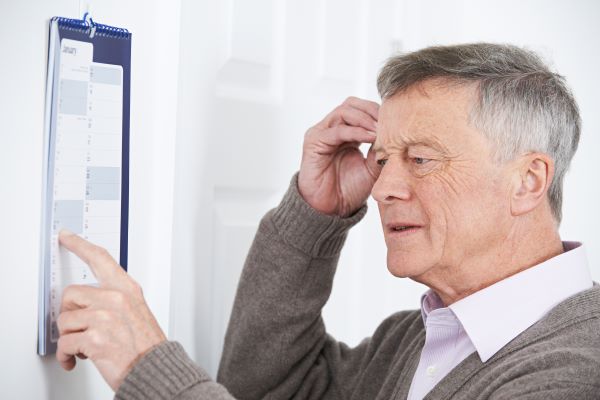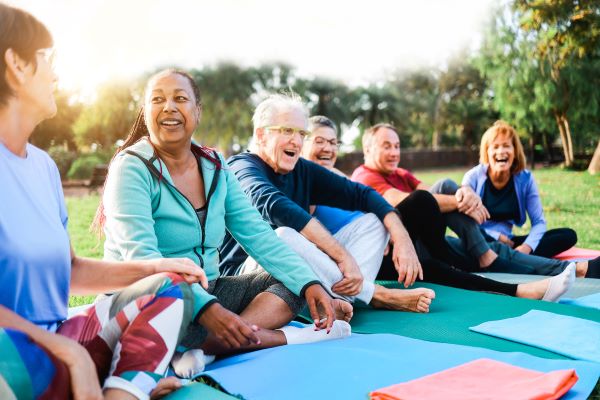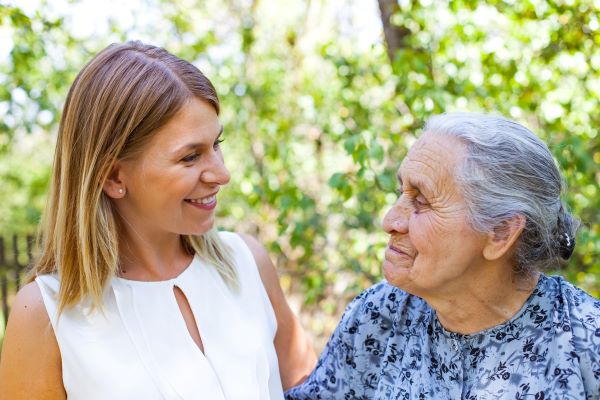In America, aging in place has become the norm for many aging adults. Nearly all…
New Aging in Place Technology for Seniors and Caregivers in 2020
Technology is central to American life and becoming more prominant in senior populations as the tech industry targets this growing market demographic. A new survey by AARP projects by the year 2030 close to 132 million Americans aged 50 or more will annually spend more than 84 billion dollars on technology products. Today, 91 percent of those aged 50 or more use a computer, and 94 percent say that technology allows them to keep in touch with family and friends. Even smartphone use in older Americans (80 percent) maps out to the same number as the population at large. Also, many parents and grandparents are spending considerable amounts of money on tech-focused gifts for children and grandchildren. Even people aged 70 or more are showing a growing interest in technology and its applications to better their lives.
A Cambria Health survey finds that an estimated 100 million people, 45 percent of the US population, currently care for a loved one and that 64 percent of these unpaid caregivers are increasingly using digital tools to help them. Technology applications are ubiquitous in the paid caregiver world. Applications that are most commonly used include virtual medicine and health trackers worn as digital watches, home automation, motion-sensing devices, medication reminders, GPS devices, and emergency response systems.
The Consumer Electronics Show (CES) held every January in Las Vegas, NV showcases more than 4,400 exhibiting companies from all sectors within the technology industry attended by 170,000 people from 160 countries. The blog, Aging and Health Technology Watch, which tracks industry market trends, research, and analysis, identifies ten intriguing new technologies that currently address the older adult digital tools market. While these are specific to proprietary development companies, there is an expectation as the technology takes off, other tech companies will follow suit. Some of these digital tools are available, while others are not. The booming market for senior technology tools and their associated applications is undergoing very intensive development.
CarePLUS, though not yet available on the open market, uses discreet cameras throughout a household which can detect not only motion but the postures of loved ones. Through the use of artificial intelligence (AI) the system is capable of releasing warning messages in a moment of danger in real time. The artificial intelligence can detect hazards, including falling, sitting for too long, remaining too long in the bathroom, leaving home at an undesignated time, skipping medications, and more. This system reduces the need for multiple individual digital tools by combining many monitoring aspects into one technology product.
The Essence Group Fall Detector Radar is exclusively a multi-sensor fall detection system using Texas Instrument radar technology. Though this product is not yet available, the application programming interface (API) works with Essence’s Care@Home™ monitoring platform for seniors. Radar mmWave (extremely high-frequency millimeter-wave bands) technology tracks a person’s position in their home and provides immediate detection of a fall, alerting healthcare providers.
For those aging adults with hearing loss, HeardThat™ is capable of turning a smartphone into a hearing assistant by tuning out background noise. Through the use of AI, this technology enables individuals who have hearing loss to more clearly hear speech, allowing them to more fully engage in conversation. The “de-noised” environment can also work with Bluetooth-enabled hearing aids and other listening devices like earphones in conjunction with your smartphone. While this is not yet available an invitation to become involved in the beta testing program and information about a release date is available through their webpage.
AARP Innovation Labs is developing an augmented reality application HomeFit AR™ that enables users to scan a room, discovering what improvements can be implemented to help seniors who choose to age in place have a safer home environment. Appliances such as refrigerators and microwaves, commonly used spaces like sinks and stairs, are identified for specific fixes to put in place that will make a home safer as well as a more comfortable fit for senior living. While the HomeFit AR Guide is still in beta version (part of a software release cycle), the public release date is slated for the year 2020.
Voice-enabled AI is adding integrated voice and conversational intelligence into your digital products using an independent platform that is continuously learning. Houndify™ is a “speech to meaning” engine that can interpret language with unprecedented accuracy and speed. Deep Meaning Understanding™ technology allows a user to ask multiple questions and receive filter results all at once. As the platform is non-brand specific, it can work with your existing device.
A smart remote caregiver solution known as Kytera Companion™ can provide insight into the activity of aging at-home seniors. This home system solution includes data collection, a mobile app for loved ones and a dashboard for professional caregivers. This product can detect both hard and soft falls using a wristband, location sensors, a base unit, and an internet-connected dashboard. Soft falls are the most common type of fall among the elderly and this is the first technology able to assess such a fall. Using AI the system provides comprehensive wellness monitoring that can detect physical and mental deterioration, and be predictive as to evolving disease conditions like depression, dementia, and UTI all based on behavioral symptoms.
Created by physicians and medical device engineers, MedWand™ helps to fulfill the potential of telemedicine. The wand incorporates multiple diagnostic tools in one and is a handheld device. Clinicians are able to conduct remote office visits through the real-time collection of multiple vital sign readings allowing for key patient assessments among numerous medical conditions anywhere in the world.
Orcam MyEye 2 is an advanced wearable assistive technology for the visually impaired or blind. It helps to provide independence by audibly conveying visual information. It can read a text, recognize faces, identify products, and more by simply clipping the device onto your glasses. For the hearing impaired, OrCam Hear is a wearable assistive technology device that uses artificial intelligence, combining lip reading with simultaneous voice separation for better listening. The wireless hearing aid is worn as a necklace with camera modules and microphone sets, allowing for hands-free operation and crisp, isolated voice reception even among crowds.
A companion robot called PECOLA is in development by Industrial Technology Research Institute (ITRI). It incorporates ambient intelligence for the elderly through the collection and analysis of the user’s life and physiological data. It is capable of detecting abnormal behaviors of a loved one allowing for preventative rather than responsive healthcare which can provide best outcomes. By following the senior around their home, PECOLA can identify emotions as well as perform video-generated diet analysis and fall detection. It can conduct sleep assessments through breathing and heart rate readings. The daily generated activity reports are then automatically provided to the user’s caregiver.
The Zibrio SmartScale is available for pre-order and enables a home user to measure and track their balance with a safe and simple 60-second test. The test itself is eyes open, stand still for 60 seconds while the scale assesses balance and provides a score (1-10); the lower the score in seniors 65 or more, the higher the risk for falls. This scale also provides personalized insight into lifestyle factors that affect your balance.
Other notable new products are available for review at these websites:
- https://www.vitaltech.com/brightlifeservices
- https://www.caregiversmartsolutions.com/
- https://locatemotion.com/
- https://www.formasafehome.com/
- https://vayyar.com/home
Digital technology innovation specifically designed to address older adult care needs provide new ways for seniors to age in place successfully. Consultation with your healthcare providers as to what systems they employ can help synchronize your healthcare and reduce doctor office visits through the use of telemedicine and at-home monitoring. It also can provide unpaid caregivers reliable, real-time information about a loved one’s well-being that can help reduce stress on the part of the caregiver.
If you are caring for a loved one, we can help to ensure that the proper legal documents are in place for you and your loved one. Contact our Auburn, IN office by calling 260-925-3738.



